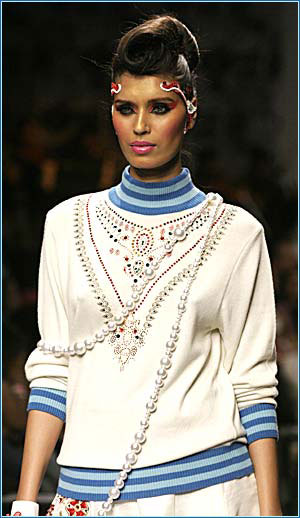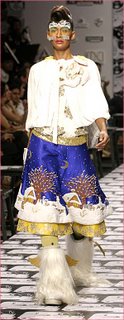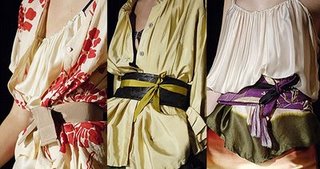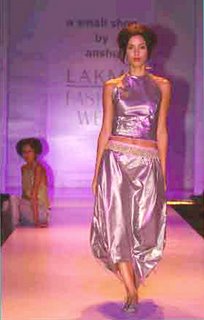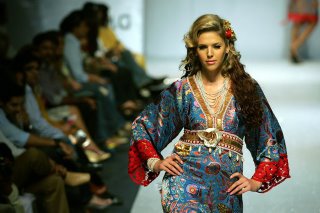Last weekend i watched Alque Padamsee's adaptation of the Bard's 'Macbeth'.
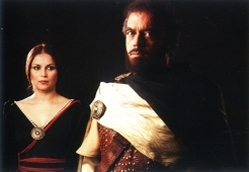 Not a great fan of the senior Padamsee's work, what drew me was the promise of seeing costumes fashioned by couturier Tarun Tahiliani amongst the action on stage.
Not a great fan of the senior Padamsee's work, what drew me was the promise of seeing costumes fashioned by couturier Tarun Tahiliani amongst the action on stage.While the production had its high points, i was quite taken aback on seeing the costumes.
The ensembles bore the appropriate period look with capes that secured around the neck, faux leather fashioned into breast plates and thigh grazing tunics worn over leggings (hose) for the knights. Even the suede footwear was detailed with rivetted straps that ran up the calves. The maid servants' garb appeared charming and feminine to the eye, and in the case of Lady Macbeth, appropriatly dark, mysterious and sensuous.
But something kept bothering my eye.... And it took me a moment to figure what that discordant note was. And lo and behold clarity presented itself. The garments were badly constructed!
And not i'm not talking threads hanging loose..... but puckers and bad bad draping and construction!
Lady Macbeth's gown looked flat. One could tell it was a Tarun from the flow of fabric and the twists and turns of the drape, but the execution was plain horrid!
Post show, i spoke to a couple of friends in the know and pieced together the story.
Those were indeed designs from the Tahiliani stable, but in trying to keep production costs low, the sketches had been interpreted into fabric by Padamsee's costume people.
From what i hear Tarun himself was aghast at the final effect and asked to not be enlisted for such projects again.
Just goes to show, that quality and technique are as much a hallmark of a classy design label as the creative content.
